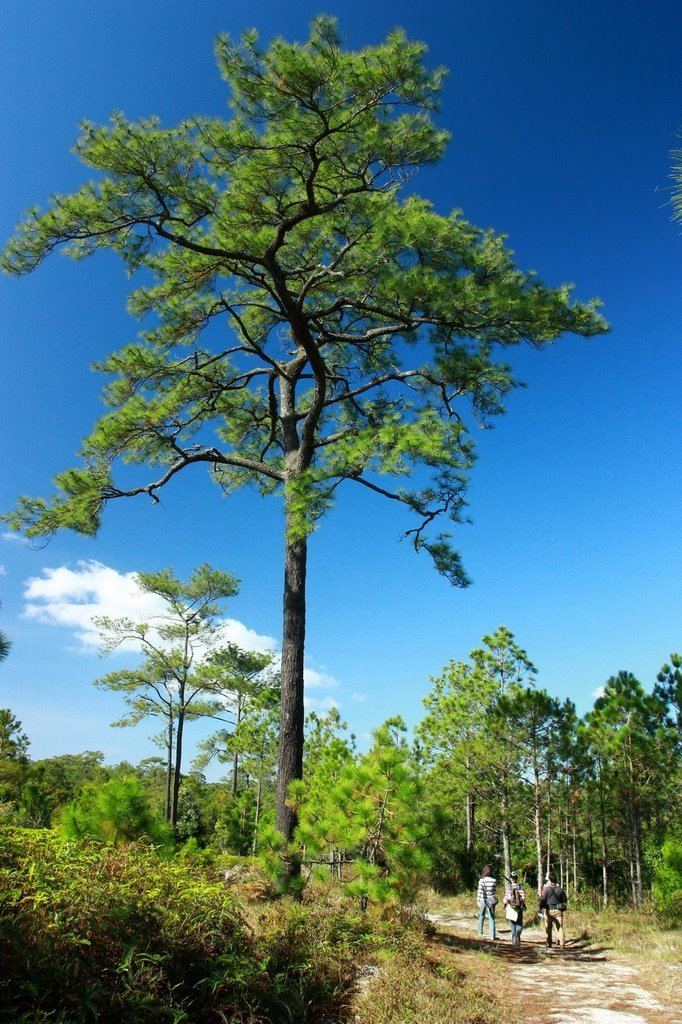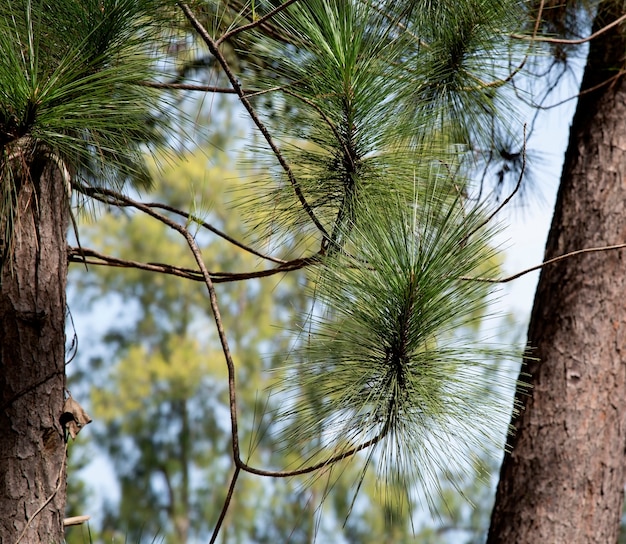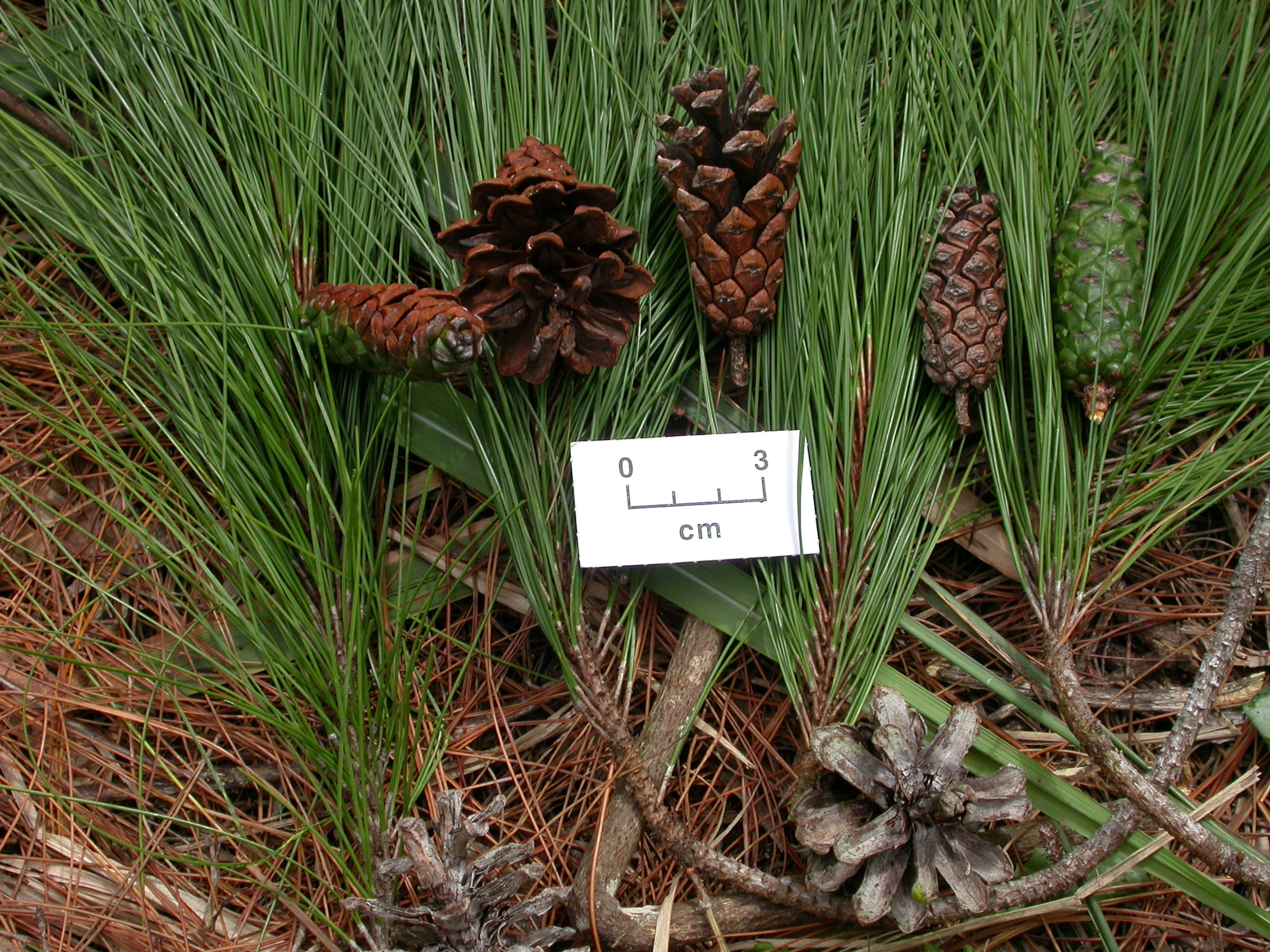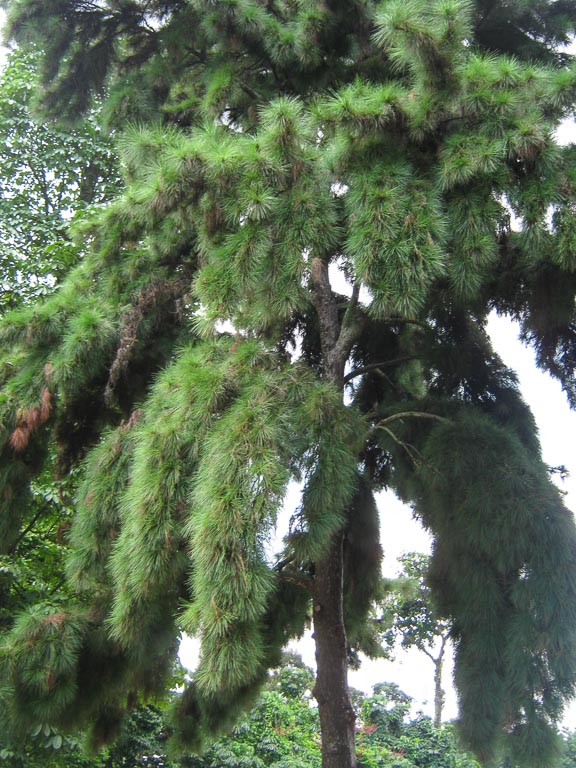Pinus merkusii (Pinaceae) image 45852 at PhytoImages.siu.edu

Pinus merkusii (Pinaceae) image 45852 at PhytoImages.siu.edu
Pinus merkusii Jungh et de Vriese, known as Tusam or Sumatran pine, is the only pine that grows naturally in the south of the Equator with its natural distribution found in Indonesia, the Philippines, Myanmar, Thailand, Laos, Cambodia, and Vietnam. The Sumatran pine is an economically and ecologically important species in Indonesia that covers three native strains, Aceh, Kerinci, and Tapanuli.

Pinus merkusii Description CG Encyclopedia
SAAT ini ada 126 jenis pohon pinus di bawah genus Pinus. Salah satunya Pinus merkusii.Pada dasarnya pohon ini bisa tumbuh di berbagai tempat dengan variasi ketinggian berbeda-beda. Namun pertumbuhan optimal Pinus merkusii pada wilayah ketinggian antara 400 hingga 2.000 meter dari permukaan laut.. Pinus merkusii merupakan satu-satunya jenis pinus asli (indigenous) Indonesia yang dijumpai tumbuh.

Pinus merkusii (Pinaceae) image 104378 at PhytoImages.siu.edu
The genus Pinus is classified as one of the most widely distributed genera of conifer trees, that are majorly distributed in the Northern and Southern hemispheres. Pinus merkusii is the only.

Pinus merkusii Alchetron, The Free Social Encyclopedia
Merkus pine (Pinus merkusii Jungh. et de Vriese) forest was developed in Dutch colonial era and has been established as plant for reforestation in Indonesia, particularly in Java Islands. Due to its genetic properties, pine can grow in many different places. Besides, pine forest does not only produce wood for some purposes, but also produces resin as a material for many products. This paper.

Pinus merkusii (Pinaceae) image 104331 at PhytoImages.siu.edu
The species is suggested to be cultivated is Pinus Merkusii. The principle of alley cropping using pinus merkusii plants can be used as a solution for tackling land degradation in Dieng. Pine planted with contour parallel pattern, while the potato crop remains on the cutting pattern contours.

Terobosan Memperbanyak Pinus (Pinus merkusii) Corryanti Triwahyuningsih Academia.edu
Pinus merkusii merupakan tumbuhan tropis lembap yang ditemukan pada ketinggian dari permukaan laut sampai dengan 2.000 m dpl. Tumbuh di daerah di mana curah hujan tahunan rata-rata berada dalam kisaran 1.000 - 2.800 mm, kadang-kadang hingga 3.500 mm, dan suhu tahunan rata-rata adalah 21 - 28 °C dengan suhu maksimum rata-rata bulan terpanas 24.

Pinus merkusii (Merkus pine or Sumatran pine) in the forest Stock Photo Alamy
Pohon pinus sangat cocok untuk penghijauan dan reboisasi karena mudah beradaptasi dan hutan pinus memiliki peran besar mencegah erosi, longsor dan banjir di daerah pegunungan dan lereng. Pohon pinus termasuk kayu kelas kuat V dan kelas awet IV. Saat ini, pinus berstatus rawan (vulnerable) berdasarkan IUCN red list.

Pinus merkusii (Pinaceae) image 104422 at PhytoImages.siu.edu
Bark thick, rough, gray-brown or reddish-brown, deeply fissured, forming small rounded plates on the lower part of the trunk; thin and flaky in upper crown; all bark thin on trees from some areas at higher altitude (Tapanuli prov., Sumatra) where grass fires are infrequent. Branches mostly multinodal. First year branches brownish and glabrous.

Pinus merkusii (Pinaceae) image 104379 at PhytoImages.siu.edu
Pinus merkusii Pinaceae Junghuhn & de Vriese Merkus pine ECOLOGY It is the southernmost occurring pine of all pines, and the only one whose natural distribution extends into the southern hemishpere. The naturally occurring pines of South-East Asia (P. kesiya and P. merkusii) inhabit a wide range of forest and savanna habitats.

Pinus merkusii (Pinaceae) image 52182 at PhytoImages.siu.edu
Pinus merkusii is an evergreen Tree growing to 50 m (164ft) by 30 m (98ft) at a fast rate. See above for USDA hardiness. It is hardy to UK zone 10. The flowers are pollinated by Wind. Suitable for: light (sandy), medium (loamy) and heavy (clay) soils, prefers well-drained soil and can grow in nutritionally poor soil. Suitable pH: mildly acid and neutral soils and can grow in very acid soils.

Pinus merkusii / Sumatran pine Conifer Species American Conifer Society
Kemampuan pinus tak hanya untuk mengurangi stres dan menenangkan diri, tetapi juga bisa meredakan pilek, sinus, sesak napas, dan ronchitis. Caranya mudah, tambahkan tiga tetes minyak esensial pinus pada semangkuk air panas. Kemudian tutupi kepala kamu dengan handuk, dan hirup aroma pinus melalui hidung dan mulut.

Needles of a Merkus Pine, Pinus Merkusii Stock Photo Image of natural, foliage 270893162
Abstract. Morphological and anatomical evaluation of grafted P. merkusii have been undertaken to obtain the information about compatible and incompatible symptoms of 18 years old grafts based on.

Pinus merkusii Foto Premium
Pinus merkusii, the Merkus pine [2] or Sumatran pine, is a pine native to the Malesia region of southeast Asia, and the only one that occurs naturally south of the equator. [3] Description Pinus merkusii is a medium-sized to large tree, reaching 25-45 metres (82-148 feet) tall and with a trunk diameter of up to 1 m (3 ft 3 in).

PNGTreesKey Pinus merkusii Jungh & de Vriese.
Pinus merkusii occurs in mountainous regions and forms more or less open pine woods or pine savannas influenced by periodic grass fires. This ecosystem is much influenced by man and may even have been created by people over thousands of years of occupation. In Sumatera, this is the only pine that crosses the equator into the southern hemisphere.

PINUS MERKUSII Ddayip dokumen
Awalnya Pinus merkusii menjadi salah satu jenis tanaman hasil kayu yang berguna untuk kayu pertukangan dan pulp serta kertas. Hingga dimulai dengan era Hasil Hutan Bukan Kayu (HHBK) di periode reformasi maka arah kebijakan untuk pengelolaan tegakan Pinus beralih menjadi penghasil getah.

Pinus merkusii (Thông nhua) description The Gymnosperm Database
Description : A large evergreen monoecious tree, usually 55-60 m tall, often shorter to 40 m or taller up to 70 m. Trunk straight or most often not. Crown pyramidal, branches either spreading or slightly ascending. Bark dark brown or gray at the older stem, vary from smooth, shallow to deeply fissured; inner bark red, wood creamy-white.